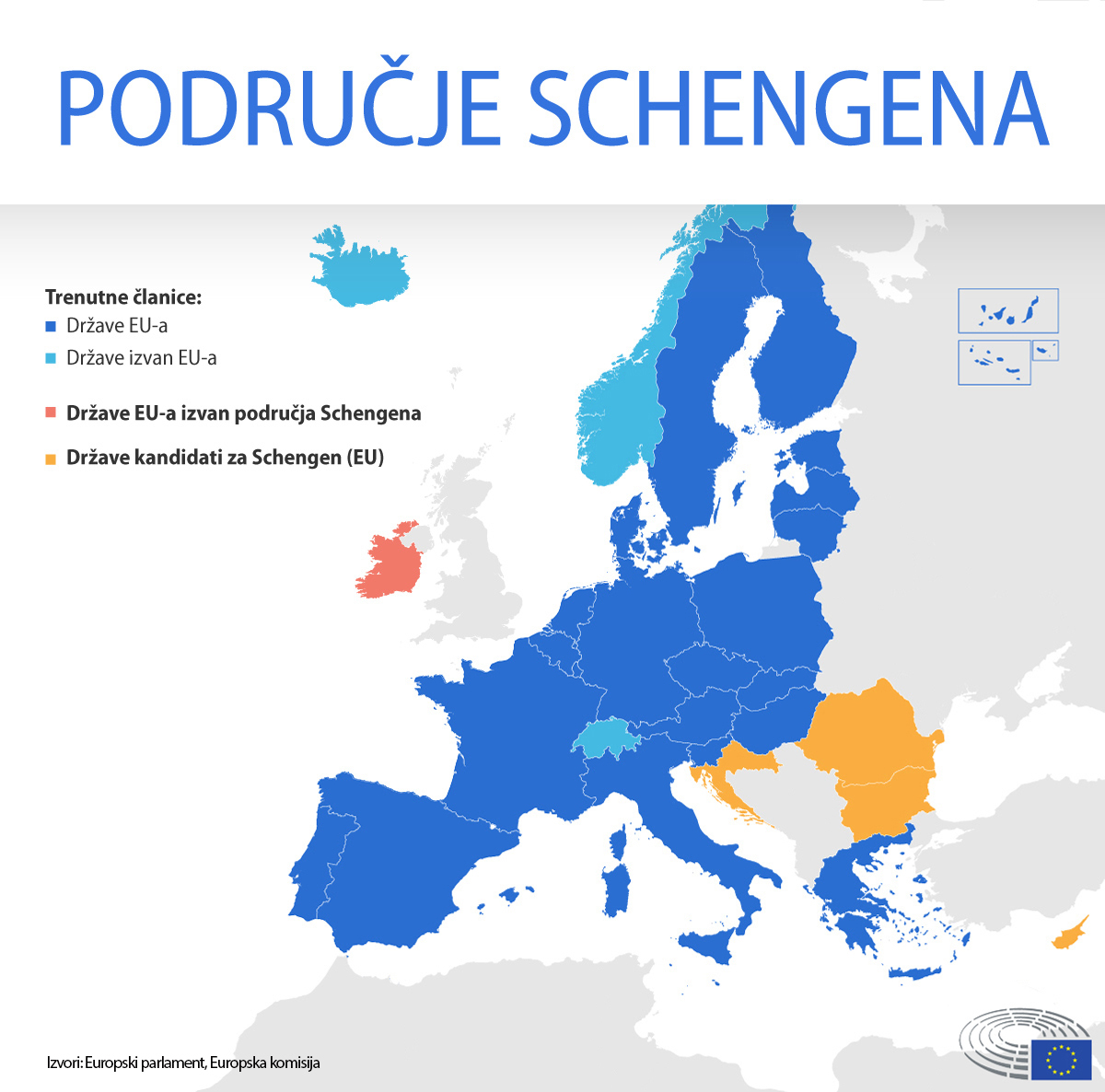
Schengen, the EU's passport-free travel area, covers 26 countries. Read on to learn which countries are members and who is likely to join next.
Free movement – the right to live, study, work and retire anywhere in the EU – is possibly the most tangible achievement of European integration. With the establishment of the Schengen area in 1995,checks were abolished at the EU's internal borders.
Today, the Schengen area encompasses most EU states, except for Ireland, which maintains an opt-out and operates its own common travel area with the UK, as well as Bulgaria, Croatia, Cyprus and Romania, which are obliged to join Schengen.
Four non-EU countries - Iceland, Norway, Switzerland and Liechtenstein - have also joined the Schengen area.
Enlargement of Schengen
Despite Bulgaria and Romania fulfilling the necessary criteria for full membership, the Schengen area has not yet been expanded to these two countries, as EU national governments must unanimously decide to allow new states to enter the border-free zone. In a vote on 18 October 2022, MEPs reiterated their call for both countries to be admitted to the Schengen area as soon as possiblestressing that free movement is at the heart of the EU project.
Kada je u pitanju Hrvatska, očekuje se da će Parlament odobriti njezino pristupanje Schengenu prije kraja 2022., dok je pristupanje Cipra privremeno odgođeno.
What are the conditions for joining the Schengen area?
- Countries must take responsibility for controlling the EU’s external borders
- They must apply a common set of Schengen rules, such as controls of land, sea and air frontiers, as well as the issuing of uniform Schengen visas
- To ensure a high level of security within the Schengen area, states must cooperate with law enforcement agencies in other Schengen countries
- They must connect to and use the Schengen Information System (SIS)
Temporary border controls
More than 1.25 billion journeys are made within the Schengen area every year. Internal border controls have been abolished within the Schengen Area, but states have retained the right to reinstate temporary controls in case of serious threats to public policy or internal security.
Since 2015, in the wake of the migration crisis, as well as the increase of cross-border terrorist threats, a number of Schengen states reintroduced such controls and even prolonged them on a number of occasions. The Covid-19 pandemic also pushed many EU countries to reintroduce border controls in an attempt to contain the spread of the virus.
In December 2021, the European Commission proposed an update of the rules governing the Schengen area, aiming to ensure that reintroducing internal border controls remains a measure of last resort and promote the use of alternative measures instead such as targeted police checks and enhanced police cooperation.
The European Parliament is working on the proposal.MEPs have on several occasions argued against the frequent reintroduction of controls, which hampers free movement of people across the EU..
Find out more about the issues of the Schengen area and the measures taken to strengthen it.